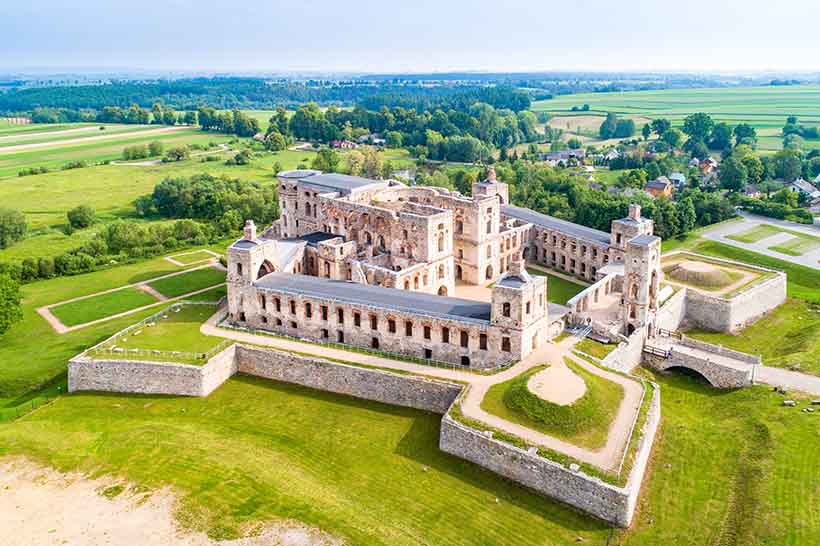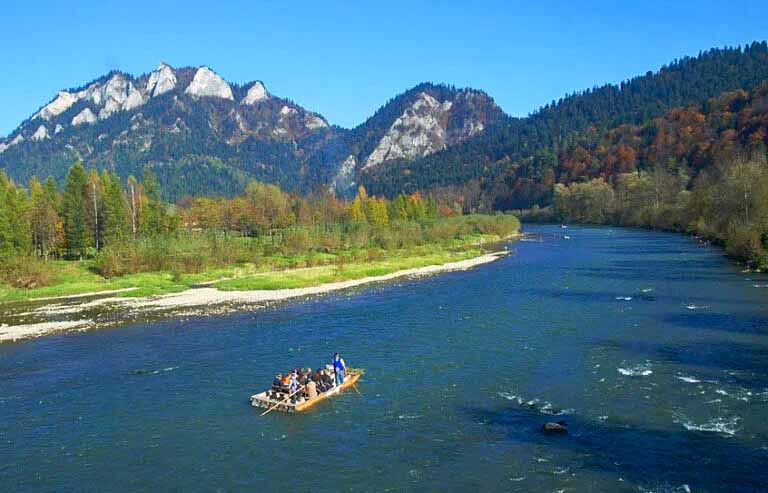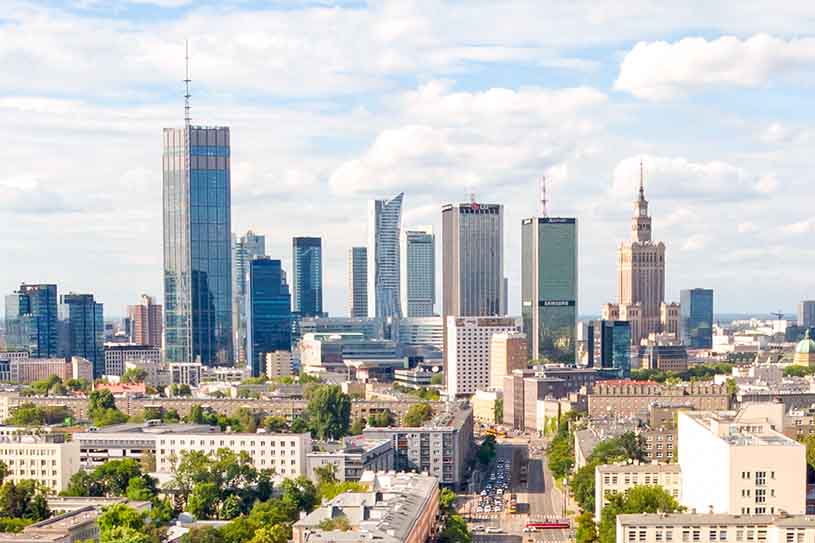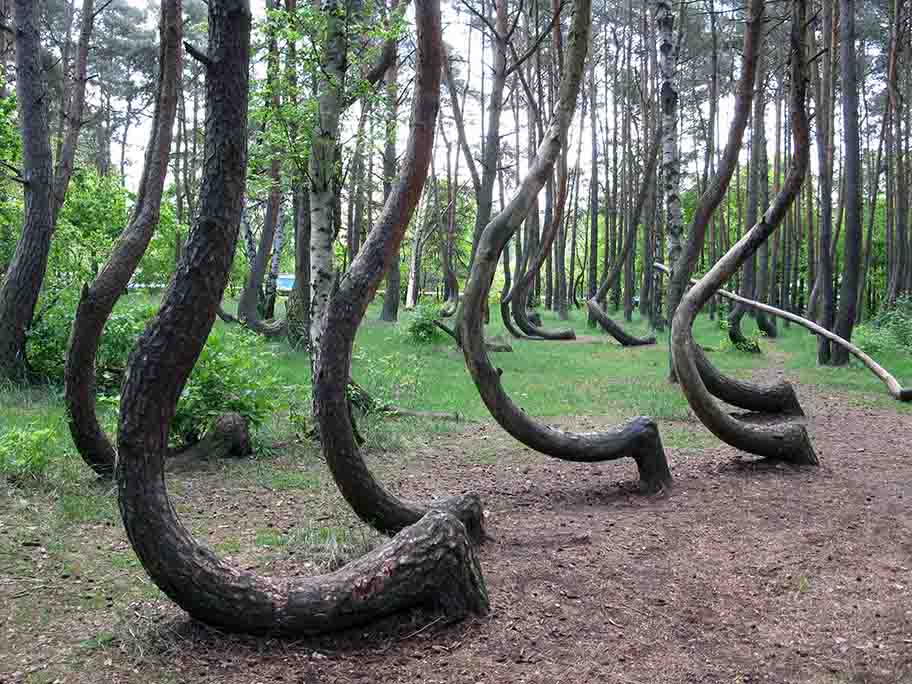In 1933, Walenty Szwajcer, a teacher and head of the local school, taking a well-known shortcut on his late evening walk home (you can guess the circumstances yourself), tripped over something in the darkness and hurt himself a little. The next day, he decided to find out what it was that stood in his way. And so it was that a defensive settlement of the Lusatian people of the Biskupin culture, dated to the Halstadt period of the Iron Age (ca. 700 BC), was discovered because our hero immediately reported his finding to an employee of the Prehistoric Department of the Wielkopolska Museum in Poznan, an archaeologist already well-known in Europe, Professor Jozef Kostrzewski. And so Biskupin began to be known.
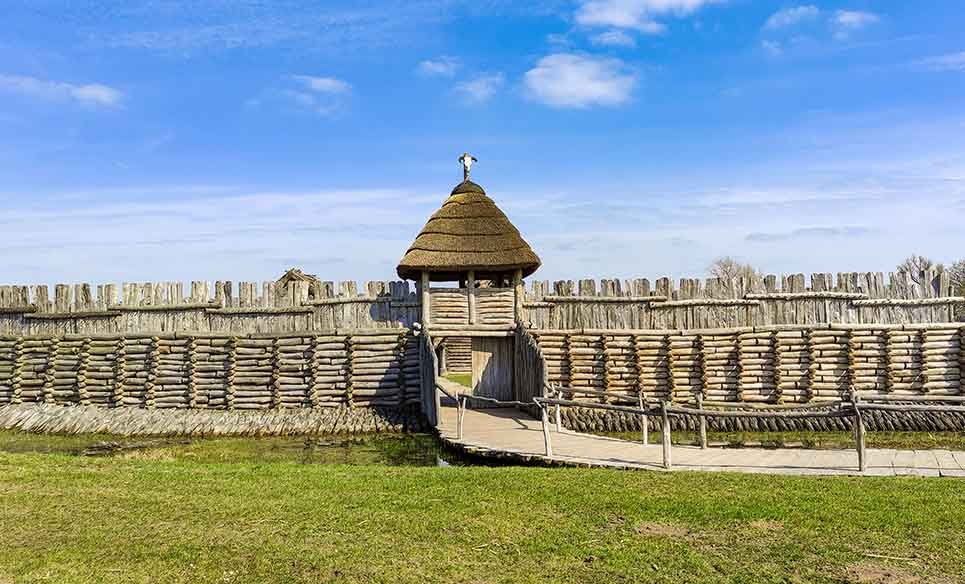
Reconstructed gate and defensive embankment of the Biskupin settlement. (Source: Wikipedia)
Archaeological research was undertaken almost immediately, already in 1934, still with little money, but from 1935 on, archaeologists had at their disposal enormous financial resources for those times (annually about 50–70 thousand zlotys, equivalent of $137,000 today[1]). Gradually, in the following years, the site was purchased from private owners by the University of Poznan to limit cultivation work that could destroy the valuable archaeological layers and wooden structures of the Biskupin settlement. It was an archaeological site in Poland where almost all active archaeologists wanted to participate. The few archaeology students who were still there at that time were obliged to learn their dream profession. No wonder - the scale of the discoveries exceeded all expectations. What's more, the research there used all available innovations, which over time became part of the standard of archaeological research.
What is Biskupin for Polish archaeology?
The Biskupin settlement was a testing ground for many of the research methods that were first introduced there. Nowadays, drones are commonly used during research. In Biskupin, the forerunner of drones was a balloon from which photographs were taken of the entire peninsula of Biskupin Lake, on which the settlement is situated. Aerial documentation was also taken to gain a greater understanding of the environment around the settlement and its wider archaeological context. New, very detailed documentation methods were introduced so that not even the smallest detail relevant to the reconstruction of the settlement was missed. The bottom of Biskupin Lake was also explored, which should be regarded as the beginning of Polish underwater archaeology. Due to the nature of the discovery, information about it and the results of the research were quickly made available in the media, not only in Poland but also abroad. Journalists and filmmakers visited Biskupin and made various documentaries about it and its findings. Representatives of state and church authorities were also interested in the progress and results of the research.
And there was much to admire. Numerous wooden structures were discovered during the research: palisades and ramparts defending the settlement from intruders, relics of streets lined with stumps, and structures of houses. These discoveries also required the use of very costly methods of preserving the wood, which, when taken out of the water and ground environment, deteriorates very quickly. Numerous movable archaeological artefacts have also been excavated at Biskupin, including fragments of pottery and whole vessels, tools and ornaments made of organic materials (wood, bone, and antlers), and metal (bronze and iron), although given the size of the settlement and the probable rather large number of inhabitants (for those times, of course), relatively few of the latter were found during the excavations, which may indicate that the Biskupiec settlement was not abandoned by its inhabitants in a hurry, as they carefully took most of the very valuable objects with them.
Biskupin and the pre-Slavs
The Second World War interrupted large-scale archaeological research. However, they resumed immediately after its end. But the research doctrine changed, being subordinated in the 1950s and 1960s not only to uncovering the past of the Polish lands but also to ideology. It was then that the description of the defensive settlement at Biskupin as a 'pre-Slavic stronghold' emerged, giving credence to the idea that the area had 'always' been Slavic, i.e., indigenously ours. Nothing could be further from the truth: the defensive settlement at Biskupin was in operation around 700–500 BC, and Slavic peoples arrived in the Polish lands around 600 AD, slightly less than 1000 years later. However, research still going on, although not to such a great extent, led to the discovery that settlement around Biskupin Lake can be dated back to the Neolithic Age (approx. 6,000 years ago), when the first farmers arrived here from the far south, bringing with them skills in plant cultivation and very primitive animal husbandry. People also settled here long after the Biskupin 'castle' had collapsed, as relics of an early mediaeval village were also discovered here.
To this day, much of the defensive settlement at Biskupin has not yet been explored - according to current doctrines, anyway, as new research methods will surely emerge in the future to help us leave it as undisturbed as possible. There have also been problems associated with typical conservation issues related to climate change (yes, the monuments are affected by it too) and modern human activity. The original wooden structures of the defensive settlement are under water; this way, they have a chance of survival. However, due to the activities of the Konin lignite mining district, the water level of the surrounding lakes and marshlands is falling, with disastrous consequences for such an important monument as the Biskupin defensive settlement.
In 1994, Biskupin was declared a Monument of History by an order of the President of the Republic of Poland, and in 2006, the provincial conservator of monuments entered the surroundings of the Biskupin defensive settlement in the register of monuments to protect its unique environmental values from development.
What to see in Biskupin?
Nowadays, the Archaeological Museum in Biskupin maintains and manages the settlement, where every year in September various festivities take place to show the customs of the time when the settlement was teeming with life. The houses of the first farmers who lived there thousands of years ago have also been reconstructed. During the summer season, in an early mediaeval village reconstructed based on archaeological findings, visitors can learn about all aspects of life in those times.
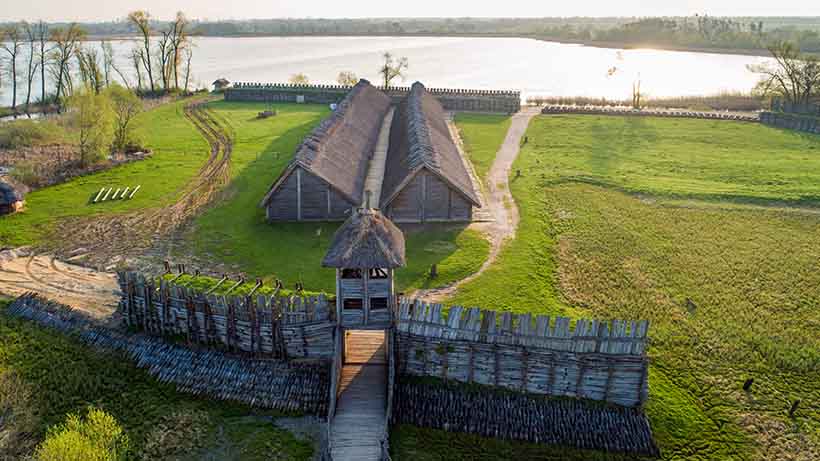
Reconstructed Biskupin settlement. PHOTO Wojciech Wojcik Forum. (Source: DlaPolonii.pl)
The reconstructed buildings of the Biskupin fortified settlement - the gate on the lakeside and the long houses in its interior - have served as film sets many times. Most of the scenes from 'The Old Tale' and many scenes from 'With Fire and Sword' were filmed there. And the spirit of Walenty Szwajcer, the discoverer of the Biskupin fortified settlement and an active participant in the subsequent research seasons, will always be present there like a living legend.
In northern Poland, there are still many sites with relics of exactly the same defensive settlements of the Lusatian culture population as the one in Biskupin, e.g., in Sobiejuchy, Boguszewo, Mirakow-Grodno, Izdebno, and Kruszwica. They are protected and excluded from the possibility of contemporary development, but due to the conservation doctrines in force, the high cost of archaeological research, and the equally high cost of conservation treatments for the wooden structure relics preserved there, they will not enjoy the same popularity as the Biskupin settlement any time soon.







